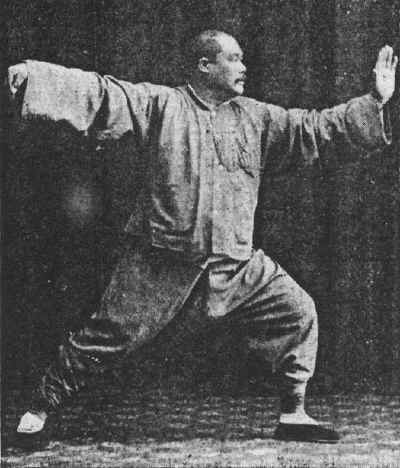
Tai Chi (aka "Boundless Fist"). originally a form of self defense used by people who lived in isolated and unstable areas in China, may help you fend off other kinds of intruders: diabetes, fibromyalgya, athritis, ADHD, and other health challenges.
Known for centuries in China, Tai chi is categorized under the Wudang grouping of Chinese martial arts: the arts applied with internal power. Its concept appears in Taoist and Confucian philosophy. The name " tai chi chuan " might derive from the Taiji symbol (yin-yan), making Tai Chi a study of yin (receptive) and yang (active) principles.
Training involves five elements: mediattion/breathing, response drills, self-defence techniques , weapons, and solo hand routines (forms). It specifically focusses on a use of leverage through the joints based on coordination and relaxation, rather than muscular tension to neutralize attacks. This slow and repetitive training . Movements encourage open internal circulation (breath, body heat, blood, lymph, peristalsis, etc) an aligned spine, abdominal breathing and a natural range of motion for a better blood circulation and healthier joints.
No wonder Tai Chi has already become popular in nursing homes and hospitals, where such practices have helped patients recuprate and rejuvenate
through improved balance control and flexibility, but also a higher bone density and better cardio vascular health. It's also proved beneficial to those with Parkinson's, Alzheimer's, Multiple Sclerosis, Heart Failure, High Blood Pressure, and Chronic Stroke.
through improved balance control and flexibility, but also a higher bone density and better cardio vascular health. It's also proved beneficial to those with Parkinson's, Alzheimer's, Multiple Sclerosis, Heart Failure, High Blood Pressure, and Chronic Stroke.
Researchers are still looking further into the various health benefits of Tai Chi, and recent studies have suggested that it may reduce the severity of Diabetes, and help in the treatment of ADHD.
Finally, last week saw the publication of an article in The New England Journal which found Tai Chi helpful for a group of patients who suffered from fibromyalgia. According to data, 3-6 % of the world population suffers from fybromyalgia, inclduing 5 millions in the US.
This rheumatologic disease, recognized by the World Health Organization since 1992, creates chronic pain, crippling fatigue and numerous other associated troubles. This study, led by Chenchen Wang at Tufts University in Boston was conducted with 66 patients. For 12 weeks, some patienst trained in tai-chi-chuan (classes twice a week and a DVD to practice with 20 minutes daily), while others followed a program including wellness education and stretching, 1 hour twice a week. Results showed that patients who practiced tai-chi-chuan showed a significant improvement on the FIQ (Fibromyalgia Impact Questionnaire, ranging from 0 to 100). They moved from a 63 points average to 35 points after a 12 week study. Meamwhile, the other patients moved from 68 à 58,6 to. Improvements still remained after 24 weeks, and one-third stopped using medication, compared with one-sixth in the stretching group.
Improvement among the group were physical and mental, which can be explained by the nature of the training: while physical exercise increases physical strength, the mental part of tai-chi-chuan might increase confidence and help patients overcome their fears and pains. Dr. Wang, attributes the results to the multiple component of Tat Chi, from physical and mental to social and spiritual.
And though more studies need to be done before recommending Tai Chi as a treatment for fibromyaliga, Mary Peterson, a patient in the Tufts study group, has lived more than one improvement:
“I couldn’t walk half a mile...it hurt me so much just to put my hands over my head...There was no joy to life...I was an entire mess from head to foot.”
“I was used to being treated in a condescending manner because they couldn’t diagnose me: ‘She’s menopausal, she’s crazy.’ ”
“I didn’t know tai chi from a sneeze...I was like, ‘Well, O.K., I’ll get to meet some people, it will get me out of the house.’ I didn’t believe any of it. I thought this is so minimal, it’s stupid.”
(Mary Peterson as quoted in the NY Times. See sources for reference article)
According to the related NY Times article, Mrs Petersen continued Tai Chi, lost 50 pounds and can now walk 3 to 7 miles daily.
Mrs Petersen's experience may be convincing story for those who view this fairly inexpensive training as too slow to lead to any improvements.
For we live at a time where "gentle" "slow" is still opposed to "efficient." But did you know that even with calorie burning, Tai-Chi works as fast as downhill skying? And how many cardiac accidents occured when people who wanted to get healthier fast opted for an intense treadmill work out?
Funny how Tai Chi is grounded in the philosophy that if one uses hardness to resist attacks, both sides are bound to be inured in the process. Instead, it rescribes to meet attacks in softness and follow its motion until the incoming force of attack exhausts itself or can be safely redirected, meeting yang with yin...could this philosophy be applied with chronic obstacles to our health and wellbeing?
For further information:
http://www.ffwushu.fr/ (France: Tai Chi and other energic arts)
http://www.taoist.org (International)
Sources:
No comments:
Post a Comment